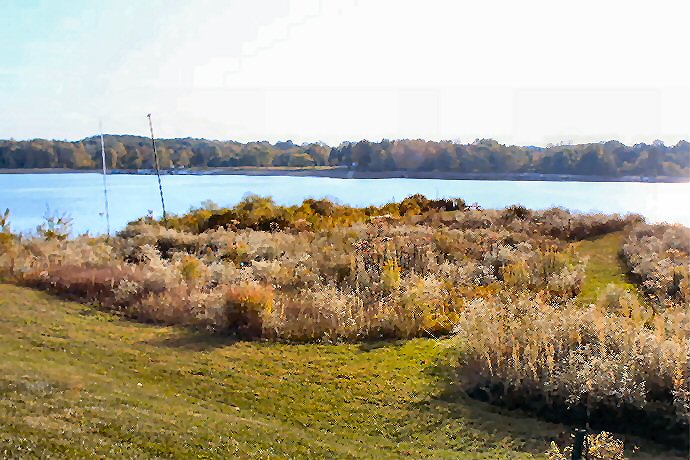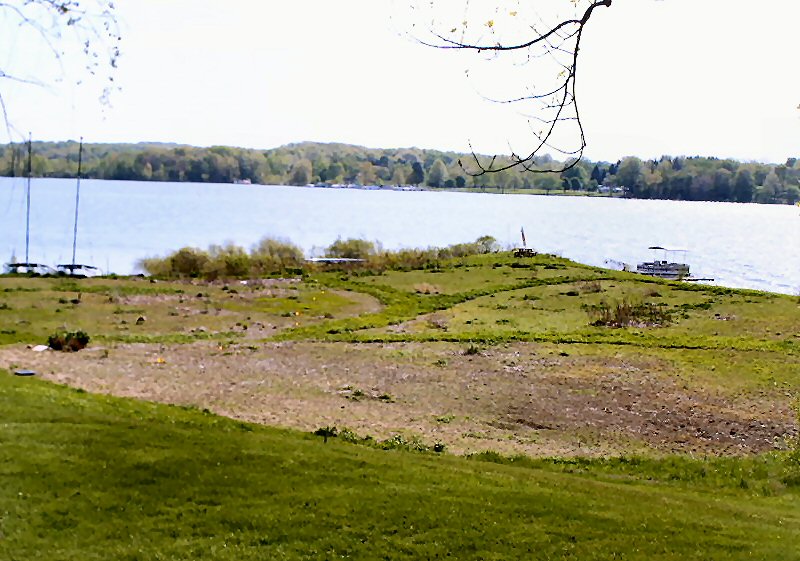The City of Columbus owns a varied amount of land along the shorelines of three drinking water reservoirs -- Hoover, Griggs, and O'Shaughnessy -- including various parkland and property bordering more than 1,200 landowner/neighbors. Depending upon the location, the city may own anywhere from a few feet to over 400 feet of land between the shore and the nearest neighbor.
With a growing population and an increasing demand for superior drinking water, by the 1980's the city recognized the need to maintain and protect the reservoirs. Around 1989, the Waterways Task Force was formed and given the responsibility of drafting management plans for each of the city's three reservoirs. Plans were developed over a six-year period with the cooperation of a committee of stakeholders which included representatives from municipal, recreational, academic and residential communities. Public meetings and workshops were held to seek additional input and provide updates of the task force's progress. The resulting reservoir management plans were completed in 1990 (Hoover(PDF, 4MB)), 1991 (O'Shaughnessy(PDF, 837KB)), and 1995 (Griggs(PDF, 1MB)).
In 1994 the Department of Public Utilities, Division of Power and Water, created the Watershed Management Section to oversee implementation of the Waterways Task Force plans in conjunction with Recreation and Parks. Today, both departments jointly manage reservoir properties to ensure the proper maintenance of undeveloped reservoir parkland in as natural a condition as possible. With cooperation from our neighbors and the utilization of appropriate and reasonable management practices, the Land Stewardship Program protects the Columbus drinking water supplies and the natural resources inherent to the surrounding land from encroachment, alteration or destruction.
Since inception of the reservoir management plans and the Land Stewardship Program, the Watershed Management Section has been steadily reclaiming city property and restoring cleared areas back to their natural condition (before & after photos below) with voluntary cooperation from residents. In 2001, participation in the program became a prerequisite for property owners to be eligible for a private dock, stake or mooring permit by City Code 921.01-8(R).


An inventory of all boats, docks and stakes visible on Griggs, O'Shaughnessy and Hoover Reservoirs was conducted in 2006 and it was determined that 47 percent of all items observed on the city-owned shoreline were being illegally maintained. This did not include privately-owned structures built on city property away from the shoreline. Beginning in 2007, with the assistance of Recreation and Parks and the City Attorney's Office, the Watershed Management Section began a comprehensive process of eliminating all unauthorized private property from the city's reservoir land. In most cases, the city is able to assist with or gain complete compliance in this regard; however, it is occasionally necessary to file complaints through the City Attorney's Office to resolve outstanding issues.
Unauthorized clearing of city property can result in damages equaling $100 per inch of tree diameter cut from city lands. All monies collected are being utilized for the reforestation and restoration of damaged reservoir properties.
As was the case when the Watershed Management program was created, the Columbus Department of Public Utilities remains committed to maintaining the reservoirs for the primary function of providing a quality water supply for our customers while also providing the community with compatible recreational opportunities.